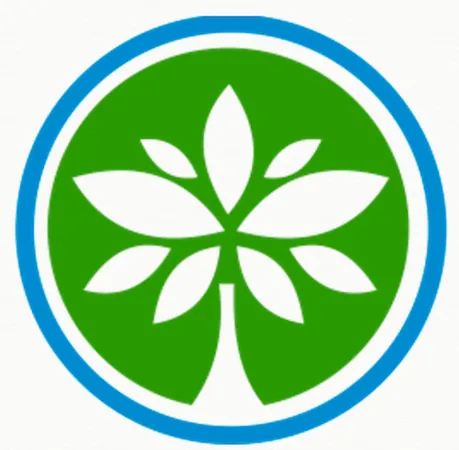
Unlocking Funding: Essential Grants for HIV/AIDS Prevention Programs
2025-01-20
Author: Rajesh
The ongoing battle against HIV/AIDS remains a daunting challenge, particularly in regions with high prevalence rates. While medical advancements have made significant strides in treatment and awareness, the urgency for robust prevention programs is greater than ever. Such initiatives are critical not only for curbing transmission rates but also for dismantling the pervasive social stigma surrounding the disease.
According to the World Health Organization (WHO), around 38 million people globally are living with HIV. Alarmingly, many lack access to vital health services, highlighting the need for proactive prevention strategies targeting at-risk populations. These strategies are particularly crucial for marginalized groups experiencing elevated HIV rates, including men who have sex with men, sex workers, and individuals who use intravenous drugs. Due to systemic discrimination and a lack of resources, these communities often face severe barriers to accessing healthcare.
Tailoring prevention programs to the unique needs of these populations can drastically reduce new infections and enhance overall health outcomes. By prioritizing education, testing, and treatment, these initiatives empower individuals to take charge of their health and make educated decisions.
Funding Opportunities for HIV/AIDS Prevention Programs
Various grants are available to support HIV/AIDS prevention efforts, categorized into three main types:
1. Government Grants
Agencies like the Centers for Disease Control and Prevention (CDC) offer targeted grants aimed at bolstering community prevention efforts. These funds enable local organizations to design tailored strategies that address specific community needs.
2. Private Foundations and Non-Profits
Numerous private foundations, including the Elton John AIDS Foundation and the Global Fund, provide financial resources for innovative HIV/AIDS prevention projects. These grants often promote collaboration, encouraging organizations to join forces for greater impact.
3. Research and Development Grants
Some grants are specifically allocated for developing new preventative technologies, such as vaccines and microbicides. These funds can lead to breakthroughs crucial for long-term reductions in transmission rates.
Navigating Eligibility Criteria and Application Processes
For organizations interested in applying for grants, understanding eligibility criteria is essential. Applicants generally need to demonstrate alignment with grant-making bodies' missions, showcasing a history of successful public health initiatives, and partnerships with local health departments.
Additionally, organizations must define their target demographics precisely, identifying groups most adversely affected by HIV/AIDS. Certain grants might restrict funding to non-profit organizations or local community entities, so reviewing the guidelines meticulously is crucial for a successful application.
Tips for Crafting a Winning Grant Proposal
A well-crafted grant proposal can increase the chances of securing funding. Here are some expert tips:
- Clarity is Key: Use clear language and straightforward explanations to effectively communicate your message to reviewers who may not be experts in HIV/AIDS prevention.
- Data-Driven Needs Assessment: Provide compelling data that reflects the prevalence of HIV within the targeted community and outlines gaps in current services.
- Include Personal Stories: Integrating testimonials from individuals impacted by HIV can resonate strongly with reviewers and bolster your narrative.
- Measurable Outcomes: Clearly outline how success will be assessed through measurable outcomes, ensuring that funders can track progress over time.
Examples of Successful Initiatives Funded by Grants
Innovative HIV/AIDS prevention programs funded through grants have proven successful in tackling the epidemic. One notable example is Project PrEP in San Francisco, funded by the CDC. This initiative promotes pre-exposure prophylaxis (PrEP) among high-risk groups while providing vital safe sex education. The combination of medical intervention and community outreach has significantly increased PrEP uptake in the area.
Another impactful program is The Positive Action Community Grants by ViiV Healthcare, which supports grassroots organizations focused on HIV prevention. One awardee employed a peer-led education model, empowering those living with HIV to educate their communities, which not only promotes awareness but also helps reduce stigma.
Conclusion
Securing funding for HIV/AIDS prevention programs is essential in addressing a critical public health issue. By understanding available grant types, eligibility requirements, and application strategies, organizations can enhance their chances of receiving financial support. Successful programs from various corners of the globe serve as powerful reminders that, with adequate resources and innovative approaches, it is indeed possible to make significant progress in reducing new HIV infections and improving health outcomes for affected individuals.
Don't miss the chance to be part of this transformative journey—explore your funding options today!


 Brasil (PT)
Brasil (PT)
 Canada (EN)
Canada (EN)
 Chile (ES)
Chile (ES)
 Česko (CS)
Česko (CS)
 대한민국 (KO)
대한민국 (KO)
 España (ES)
España (ES)
 France (FR)
France (FR)
 Hong Kong (EN)
Hong Kong (EN)
 Italia (IT)
Italia (IT)
 日本 (JA)
日本 (JA)
 Magyarország (HU)
Magyarország (HU)
 Norge (NO)
Norge (NO)
 Polska (PL)
Polska (PL)
 Schweiz (DE)
Schweiz (DE)
 Singapore (EN)
Singapore (EN)
 Sverige (SV)
Sverige (SV)
 Suomi (FI)
Suomi (FI)
 Türkiye (TR)
Türkiye (TR)
 الإمارات العربية المتحدة (AR)
الإمارات العربية المتحدة (AR)